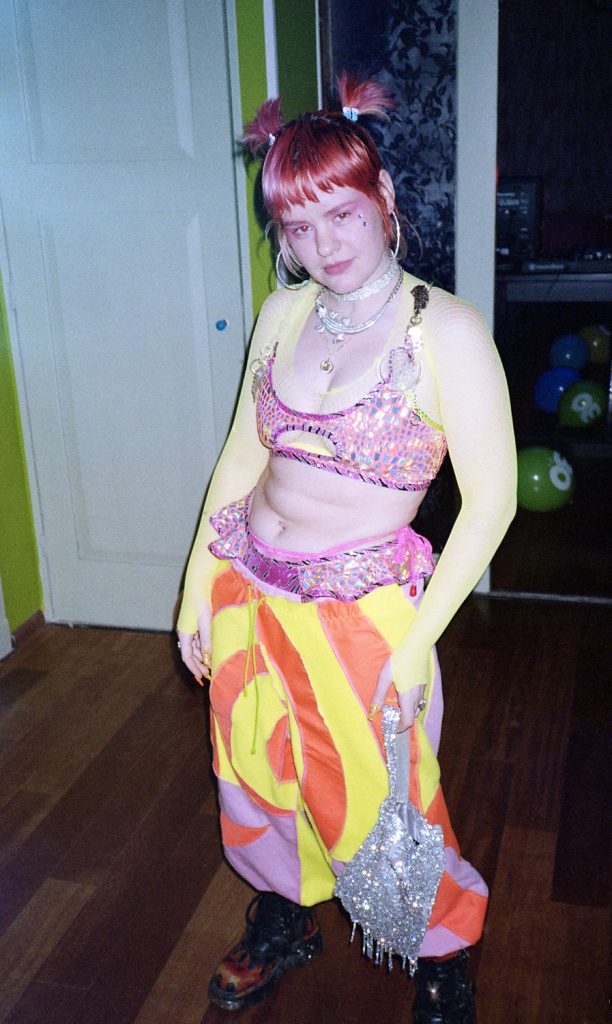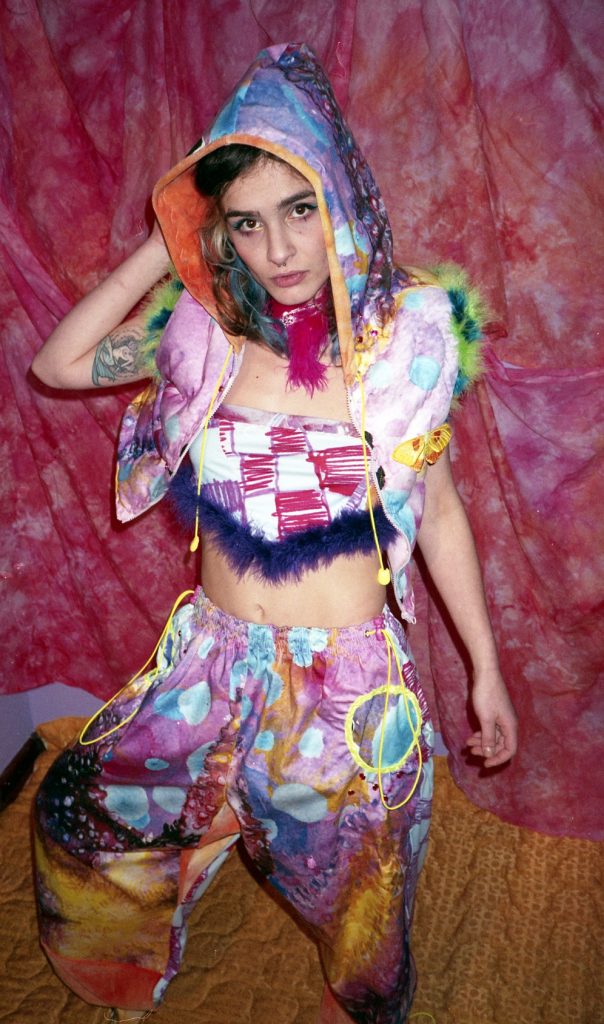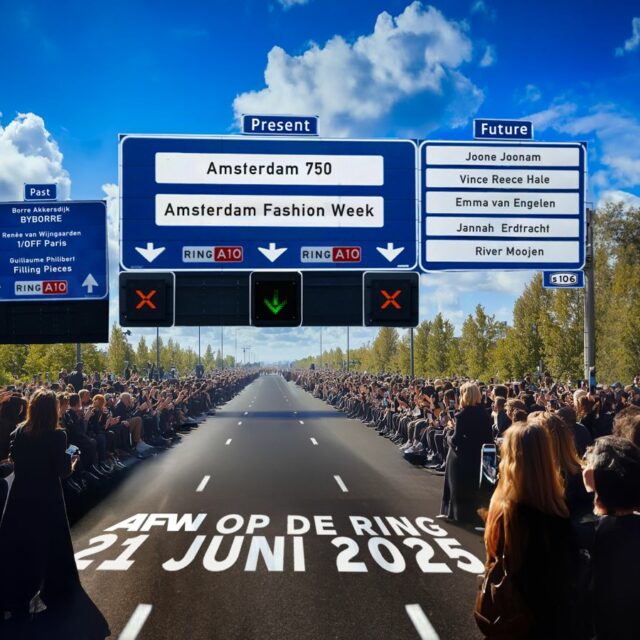Armed with an eclectic community of creatives, Rotterdam-based fashion brand DragaDina has managed to take her colourful, fun, and fabulous designs worldwide. Founder Noortje Mulders explains the importance of learning through collaboration, finding your style intuitively and taking a sewing machine on the road.
What was your initial idea behind DragaDina? How did the brand start off?
When I graduated from WDKA, I felt the urge to continue with designing and making clothes, but I wasn’t sure how to start. I decided not to buy a single piece of clothing and to make everything myself. I consciously tried to create my own style, driven by intuition, where the main focus is that I feel comfortable in what I wear. I realised that the best way to sell your clothes is to wear it yourself. My mother used to make a birthday dress for me every year, my grandmother had a small fabric shop and I was allowed to choose my dress fabric there. It always made me feel super special! My grandmother and mother were both very creative and made a lot of quilts and other things from fabric. I learned from them that you don’t need much to create something beautiful. This is also why my brand is now called DragaDina. Dina is my mother’s name and I came up with Draga myself, although I discovered later that Draga means ‘Dear’ in Slavic and Eastern European languages.

In 2014 you graduated from the Willem de Kooning Academy with the collection P?-?zaz. How does P?-?zaz’s visual identity differ from DragaDina’s? Do you feel like you’ve evolved as a designer since then?
Back then, my work was very experimental, less daily wear and more costume-like. Now, I think it’s important that the clothes I make are wearable and comfortable. Above all, I want it to be worn and rather than gathering dust in a closet.
Your “HAPPY NEW” collection is probably one of my favourite DragaDina expressions so far. What were your sources of inspiration and what was it like working with Ada Maricia Patterson’s fabric designs?
“HAPPY NEW” is also one of my favourite projects! My real sources of inspiration for that project were the participating creatives, the visual artists and the performers. It was a process of constantly being inspired by each other. The project went very organically. For me, it’s mainly about being able to work with people that are also aligned with your vision, you don’t have to compromise; a way of collaboration where you can be inspired by each other.
Ada is a super talented person, and so I was really happy that Ada wanted to participate in the project. They made their own selection of work that was printed on the fabric. I mixed all the prints into an eclectic whole and passed them on to the performers who interpreted them in their own way. The open input of the other artists also surprised me. As a designer, I believe that you should not always want or be able to have full control. Eventually it all came together as an event in my house!

In addition to collaborations with other creatives, you regularly dress artists such as Sukubratz and Animalistic Beliefs. How do you select the people you dress and work with? What does the community around DragaDina look like?
I don’t necessarily select the people I work with; people often visit me because they have seen the clothing somewhere at a performance or an event. I think the people who like to wear DragaDina are the ones who are not afraid to show themselves and also love the many forms of visual expression! The DragaDina wearers are ideally diverse people of all backgrounds, shapes, sizes and genders. The goal is that people feel comfortable in my clothes.
This year you’ve taken DragaDina around the world, including pop-up stores in New York and New Orleans. How did you make connections in the US? How did you get there?
My partner and photographer Kenneth Owens is from the US, though we met in London. In the beginning I came to visit him in America, now he lives with me in Rotterdam and we try to go to the US every year to visit friends and family. He knows a lot of people in New York and lived in New Orleans for a while which has lead to amazing photo shoots and pop-ups. I find that the US suits me well because people seem more free and are less afraid to show their individuality. I feel the people there really appreciate my creations. During my recent trip to America I made a lot of clothes on the go because I was lucky to find friends with sewing machines. I don’t like to sit still and it also helps me to interact with other makers, learn from each other and exchange techniques. It has become my therapy; the constant action of making really calms my mind.
What would you still like to achieve with DragaDina? What are your future plans for the brand?
I would really like to see my clothes in various small independent shops worldwide. There are also specific countries where I would like to show my clothes, Brazil and Japan for instance are high on my list! I am not the type of person who aspires to set up commercial mass produced collections, my freedom is very important to me. That is why it’s beneficial for me to work on a project basis with other makers such as musicians and performers. DragaDina on the road is a very liberating way of working so I would like to continue doing that!

Photo credits
Cover image:
Model, Shawn, New York, 35mm Kenneth Owens
Models, Linh & Marvin, Animistic Beliefs, Rotterdam, 35mm Kenneth Owens
Marleen Ettema runway show, Museum nacht Amsterdam, 35mm Kenneth Owens
Other images:
Model, Noor Mulders, 35mm Kenneth Owens
Model, Magdalena, HAPPY NEW, Rotterdam, 35mm, Kenneth Owens
Models, Adela Maria, Stephanie, Lindsay, Kaya, 35mm Kenneth Owens





